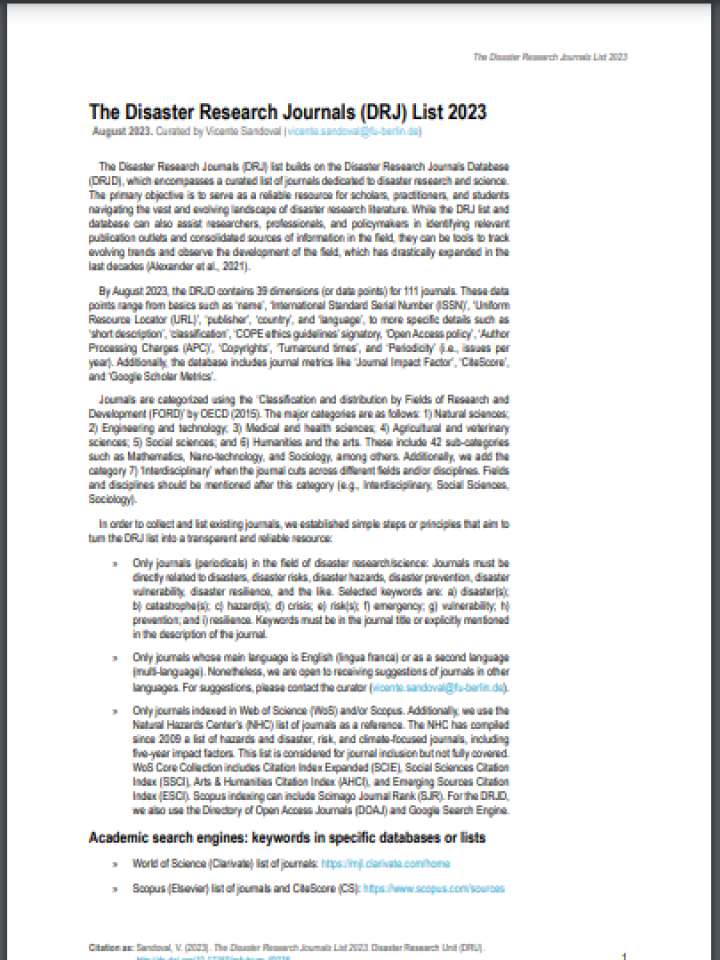The disaster research journals list 2023
The disaster research journals 2023 builds on the Disaster Research Journals (DRJ) Database, which encompasses a curated list of journals dedicated to disaster research and science. The primary objective is to serve as a reliable resource for scholars, practitioners, and students navigating the vast and evolving landscape of disaster research literature. While the DRJ List and Database can also assist researchers, professionals, and policymakers in identifying relevant publication outlets and consolidated sources of information in the field, they can be tools to track evolving trends and observe the development of the field, which has drastically expanded in the last decades.
Key points and findings from this study include:
- Indexation: Out of 111 collected journals in the DRJD by August 2023, 56 (50.5%) were indexed in WoS and/or Scopus. These 56 journals are part of the DRJ list, or sample. In this sample, 55 (98.2%) are indexed in Scopus, while 44 (78.6%) are indexed in WoS.
- Journal Impact Factor (JIF): There is a variety of JIF scores among the selected journals, with the majority (31) between 1 and 4.5 (group average of 2.95) – ranging from 0.1 as the lowest (RPEAU journal, Federazione Psicologi per i Popoli-Italy) to 6.3 as the highest (Progress in Disaster Science, Elsevier-England).
- CiteScore (CS) metric: Like with the JIF, the CS of indexed journals shows a variety of scores, with the majority (42) located around 1 and 7.5 (group average of 4.31) – ranging from 0.4 as the lowest (IDRiM journal, IDRiM Society-Japan) to 11.5 as the highest (Progress in Disaster Science, Elsevier-England).
- Periodicity: The periodicity (or the frequency of issues published within a year) of selected journals shows all types of frequencies: Monthly or once per month (8); BiMonthly or every two months (6); Quarterly or four times per year (25); Triannually or three times per year (4); Semi-Annual/Bi-Annual or two times per year (5); and Annually or once a year (5). Two journals publish five issues per year, and only one publishes seven times.
- Classification: Based on the OECD’s FORD classification, indexed journals can be grouped as follows, from the largest to the smallest count: Interdisciplinary (20); Social Sciences (17); Medical and Health Sciences (10); Engineering and Technology (5); Natural Sciences (4).
- Longevity: The oldest active and indexed journal in the sample is ‘Geneva Papers on Risk and Insurance’, published for 47 years by Palgrave Macmillan & The Geneva Association (Switzerland), since 1976. On the other hand, the youngest indexed journal is ‘Progress in Disaster Science’, published by Elsevier (England) since 2019. Nonetheless, there are older journals in the DRJD, such as the ‘Disaster Prevention Research Institute Annuals’ published by Kyoto University (Japan) since 1957 (66 years old, and still active). However, these were not included because they were discontinued, or they are currently not indexed by WoS nor Scopus. Likewise, the DRJD accounts for 16 journals created only since 2020.
Explore further
